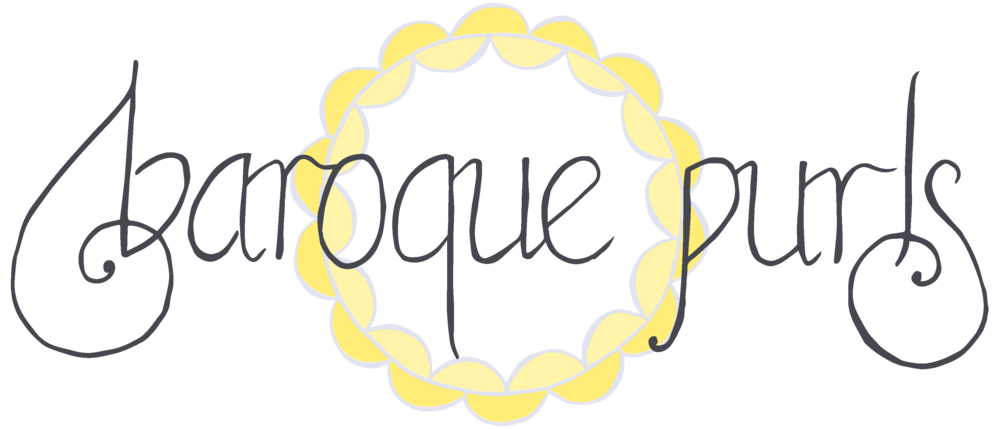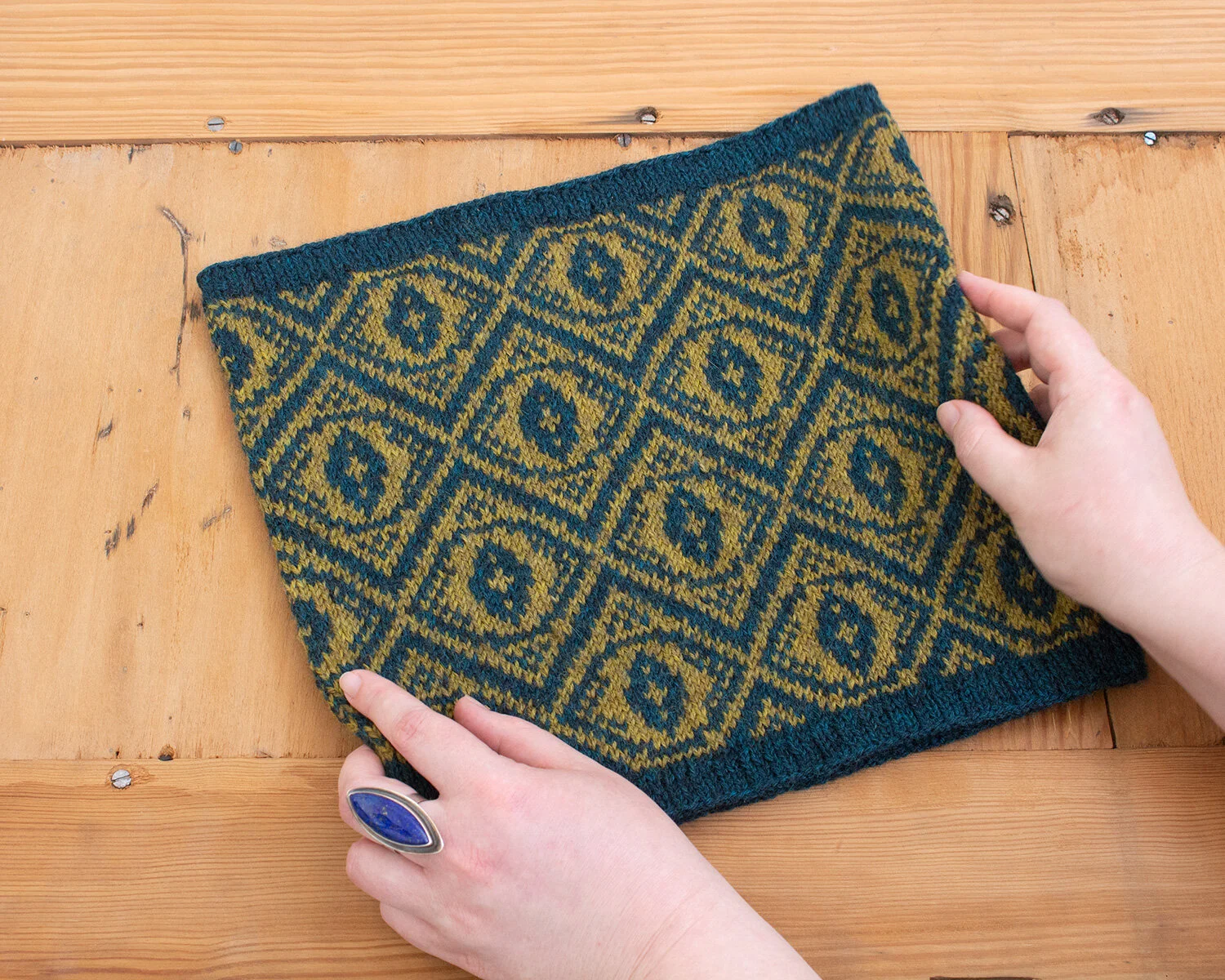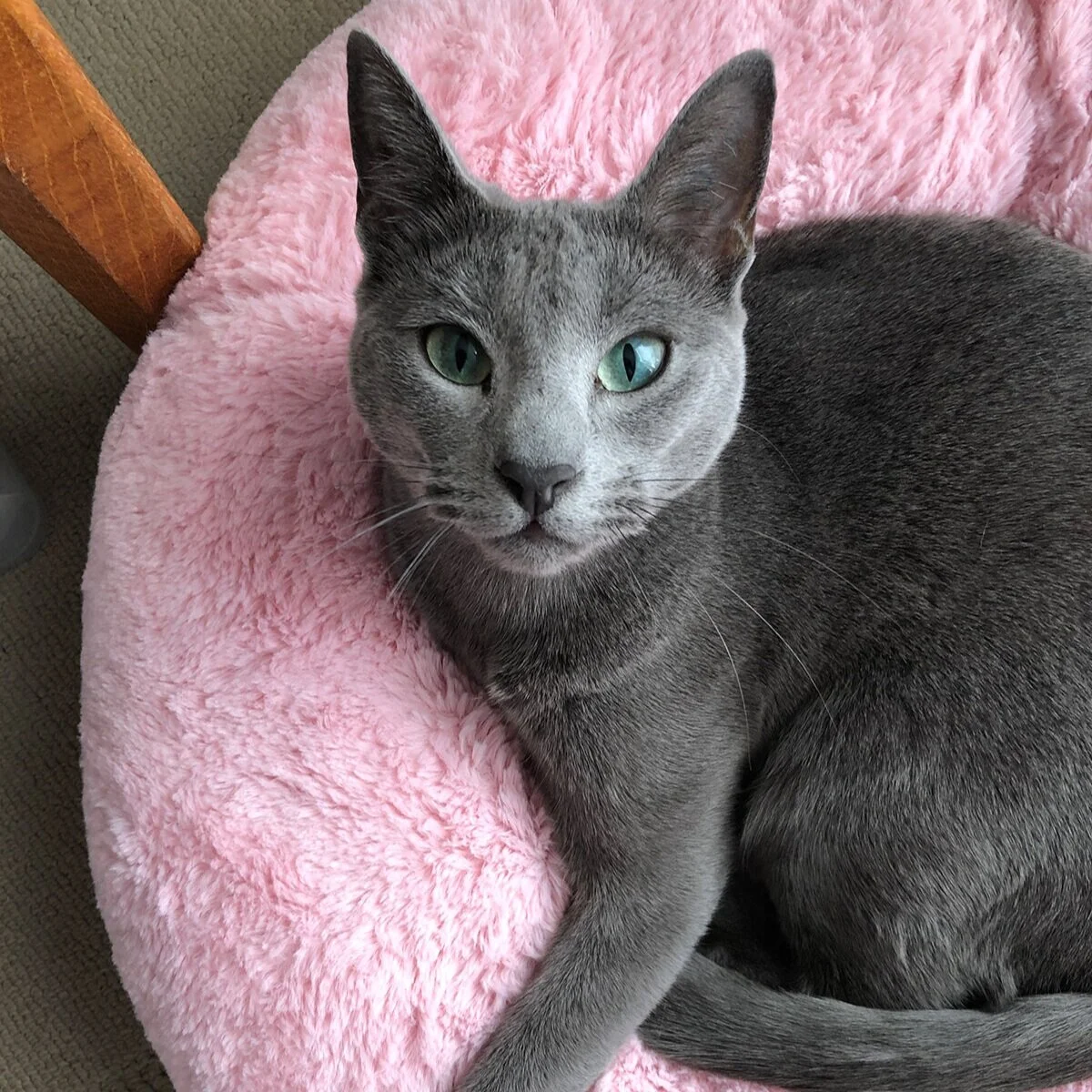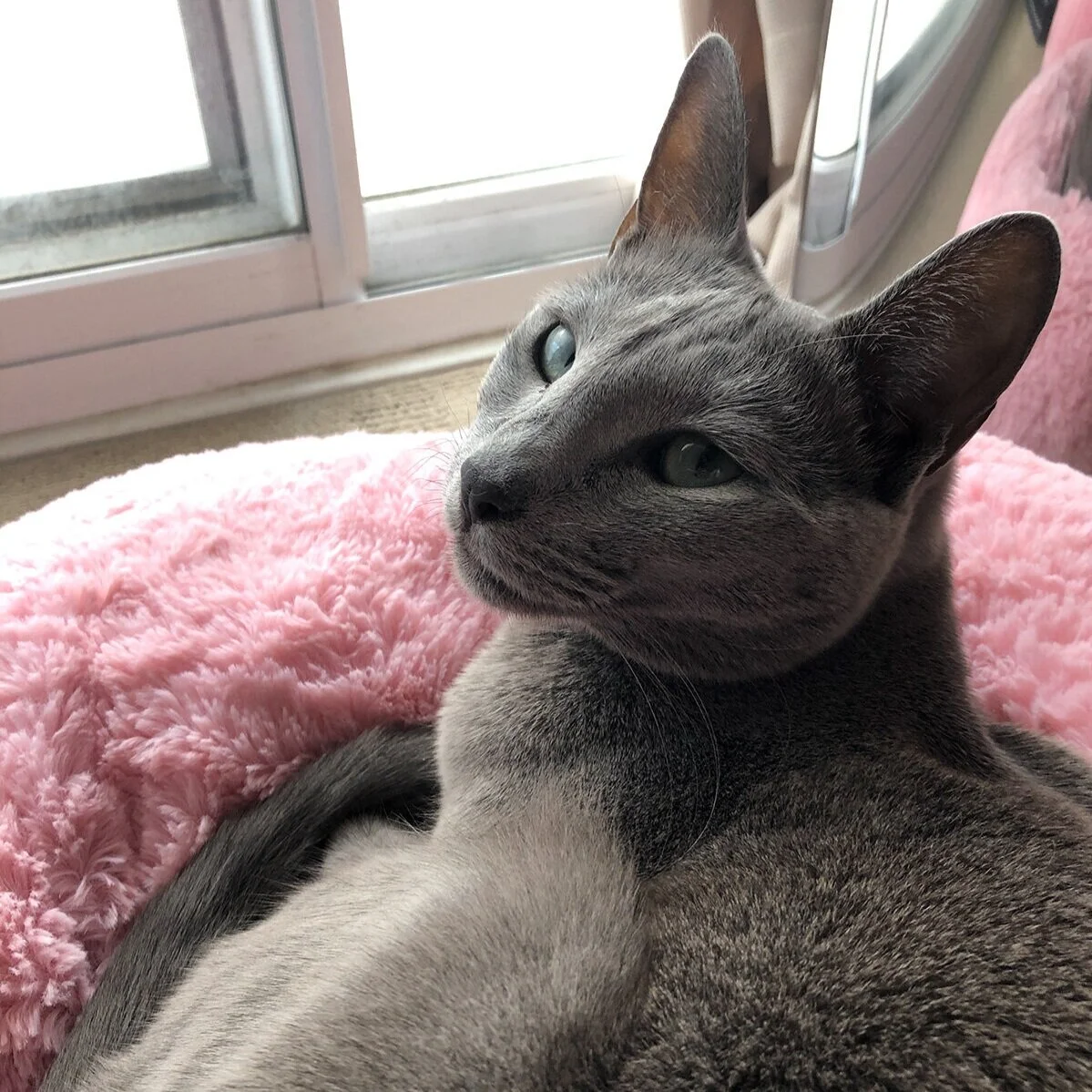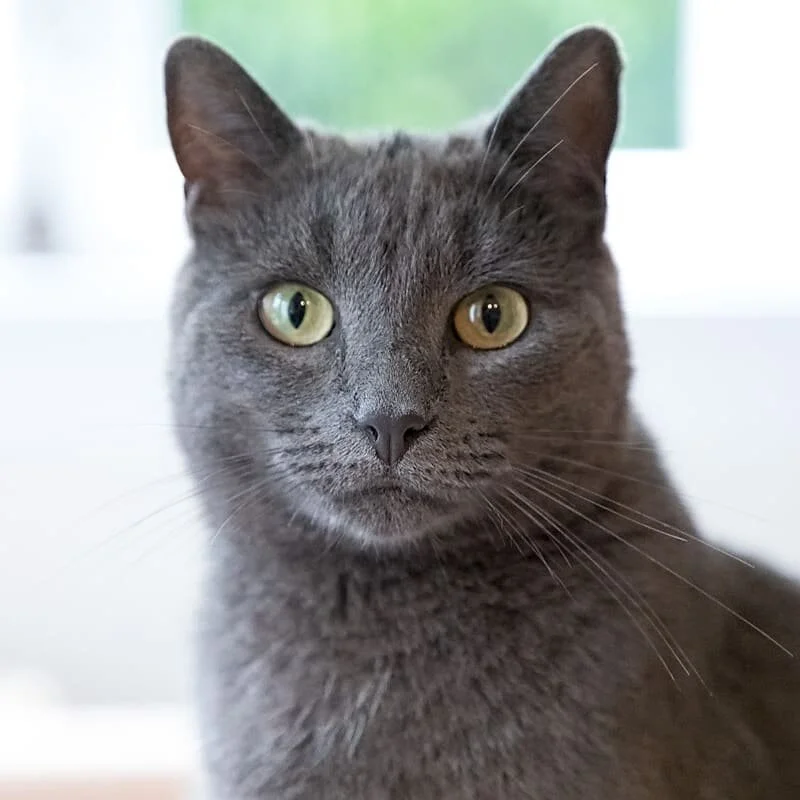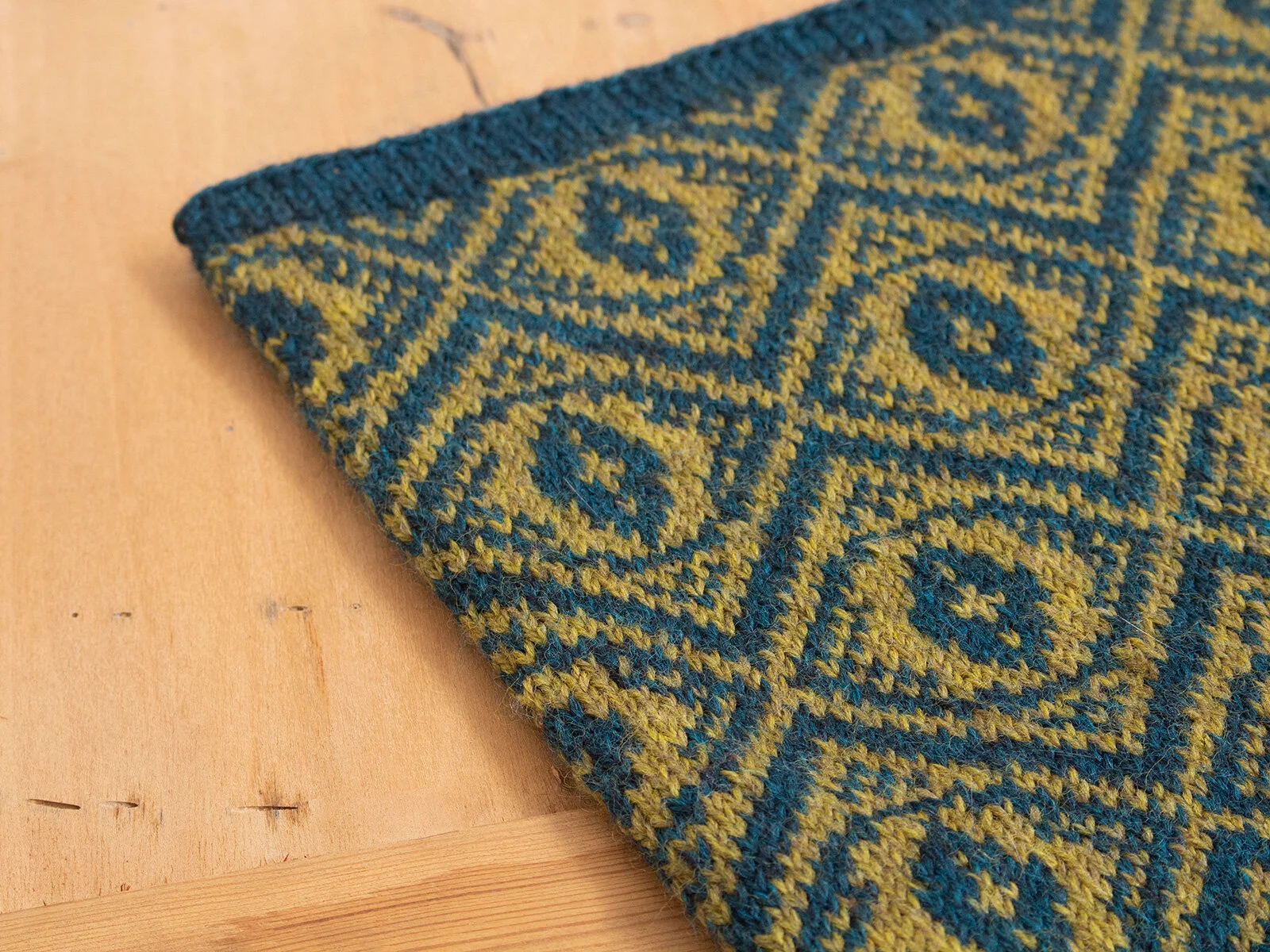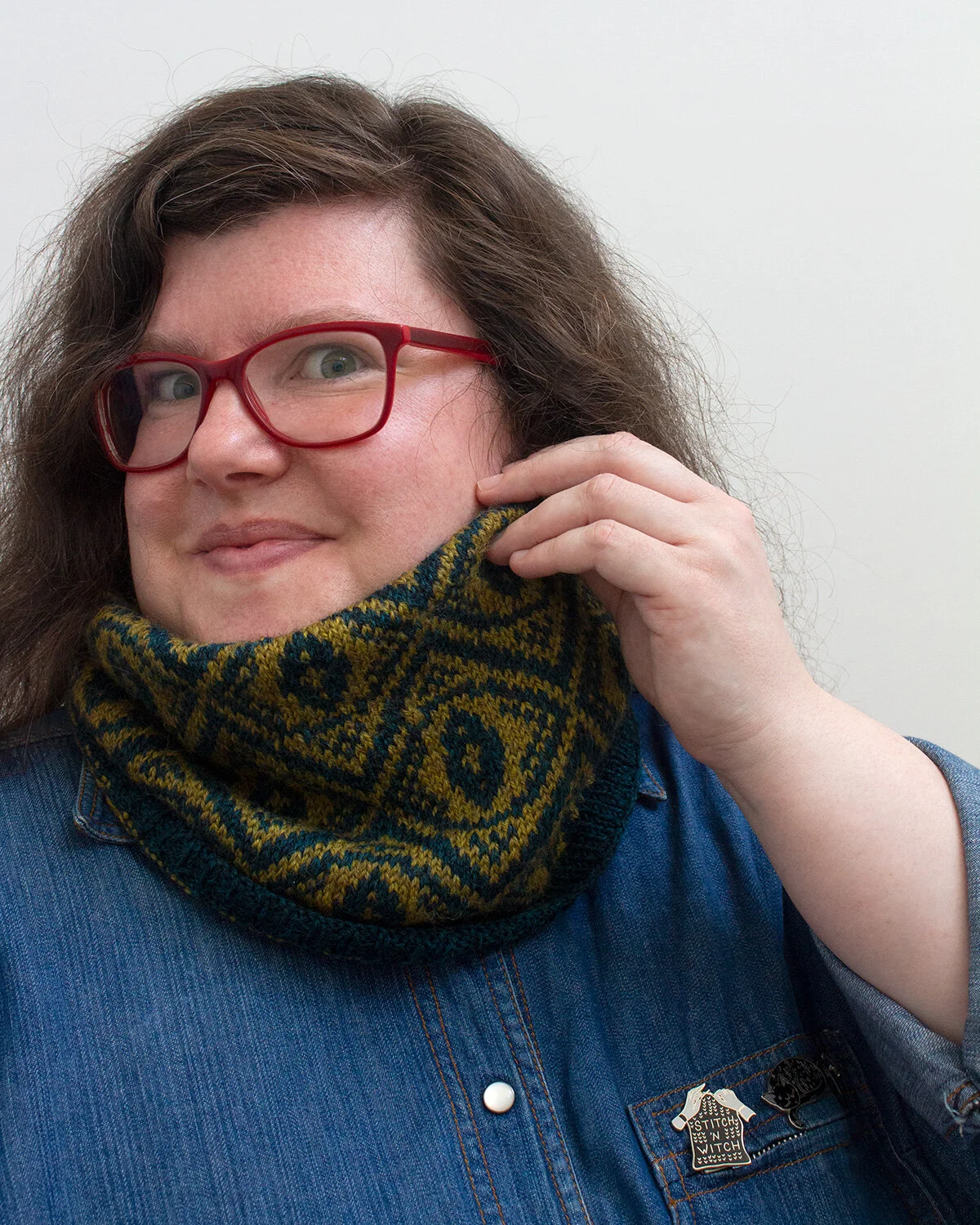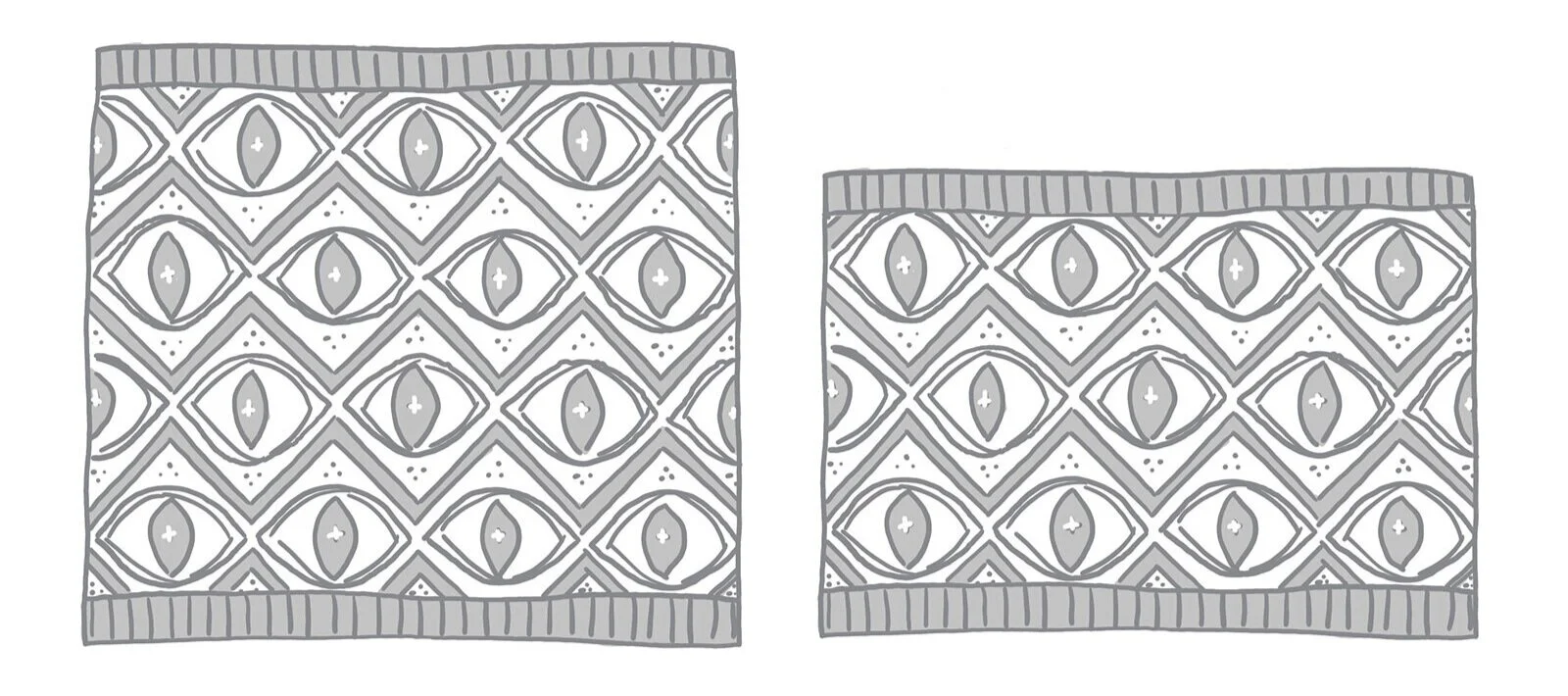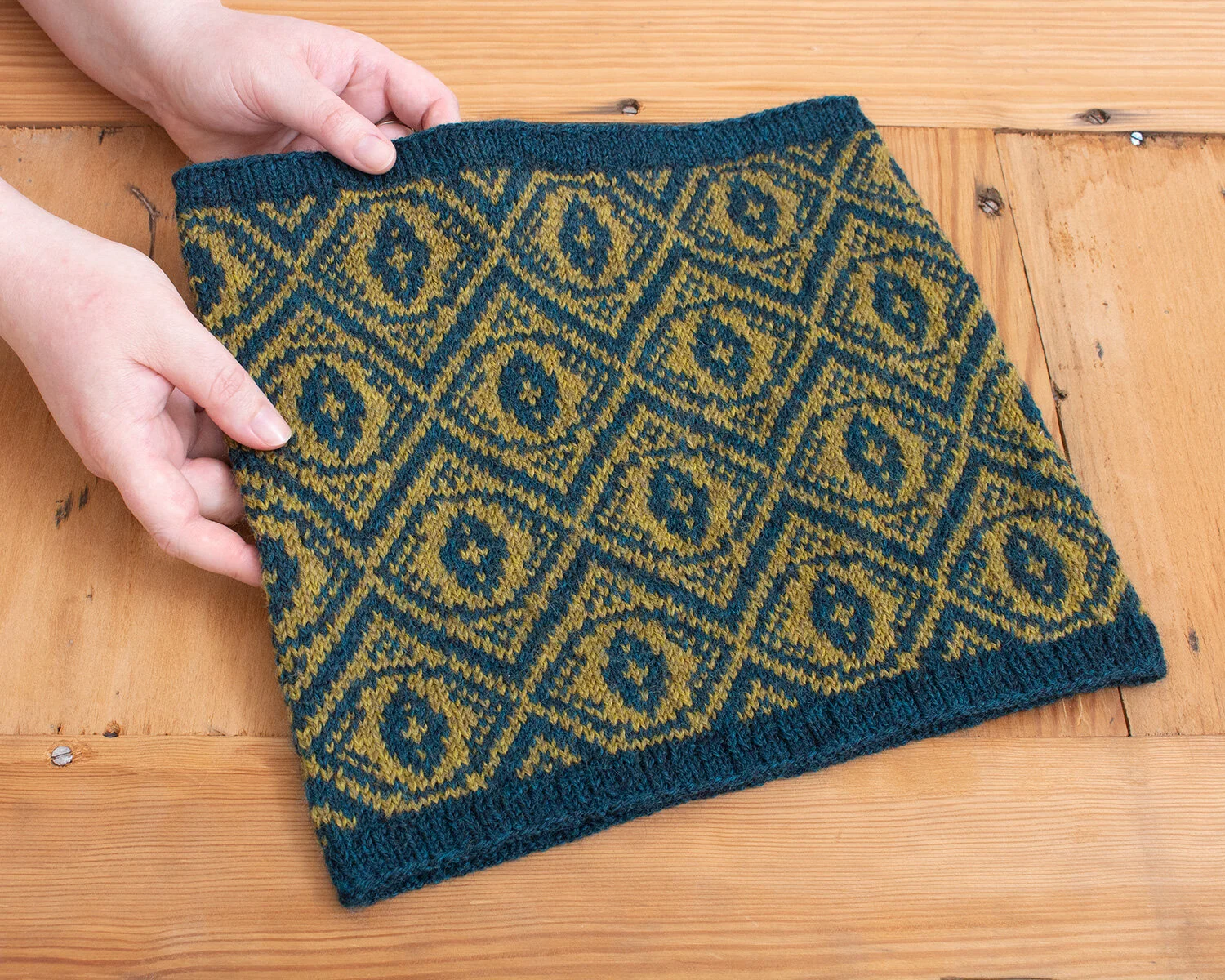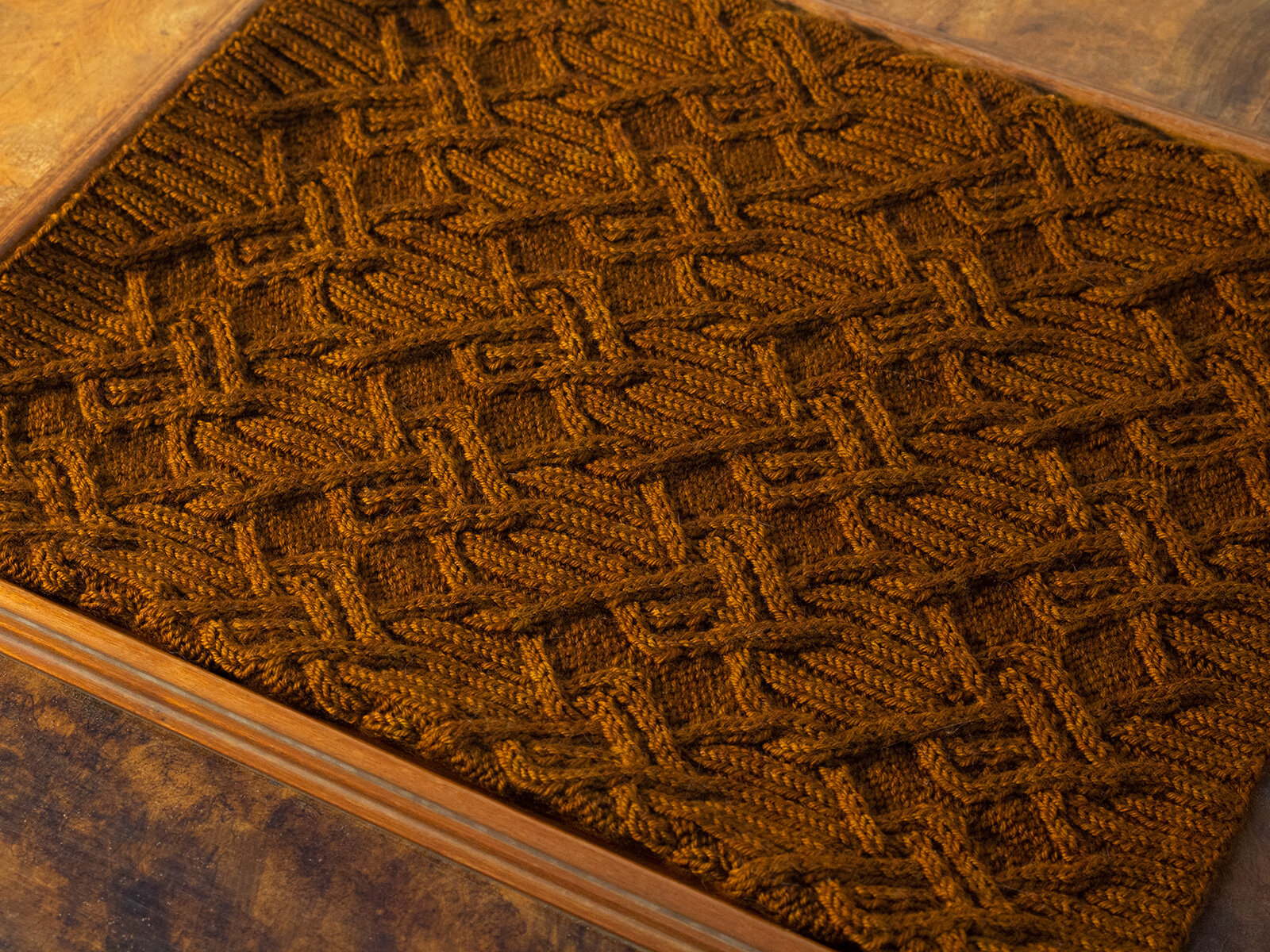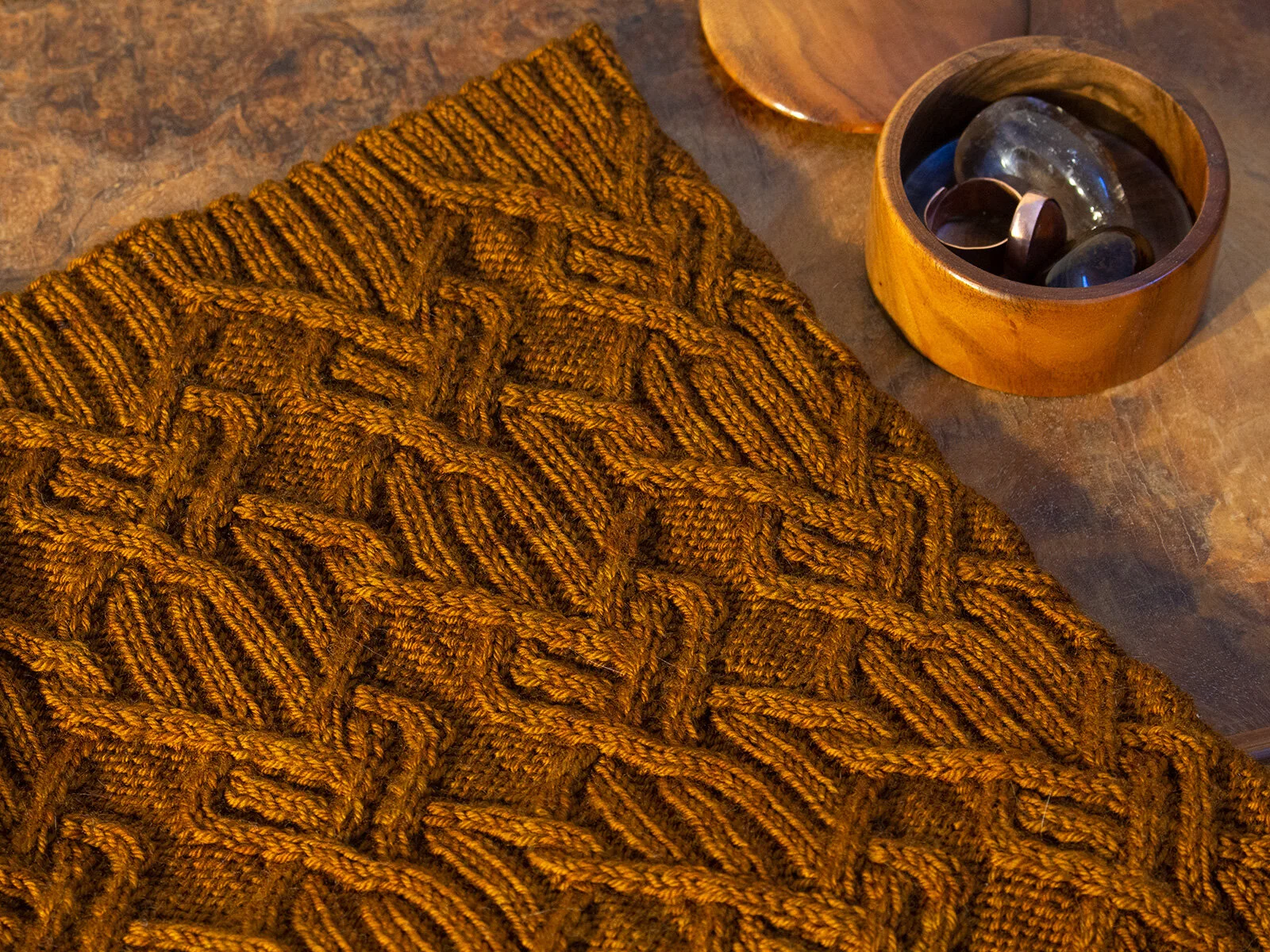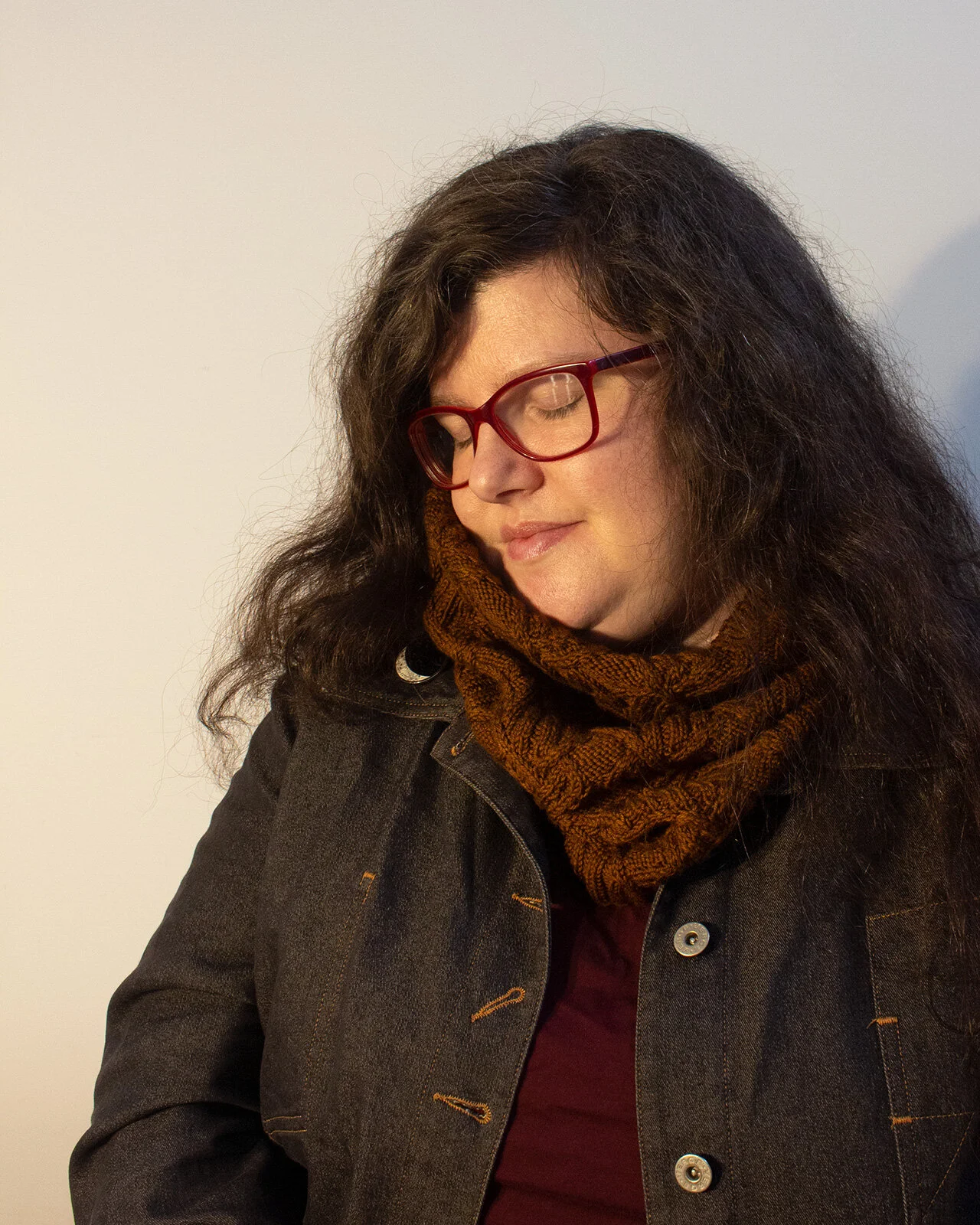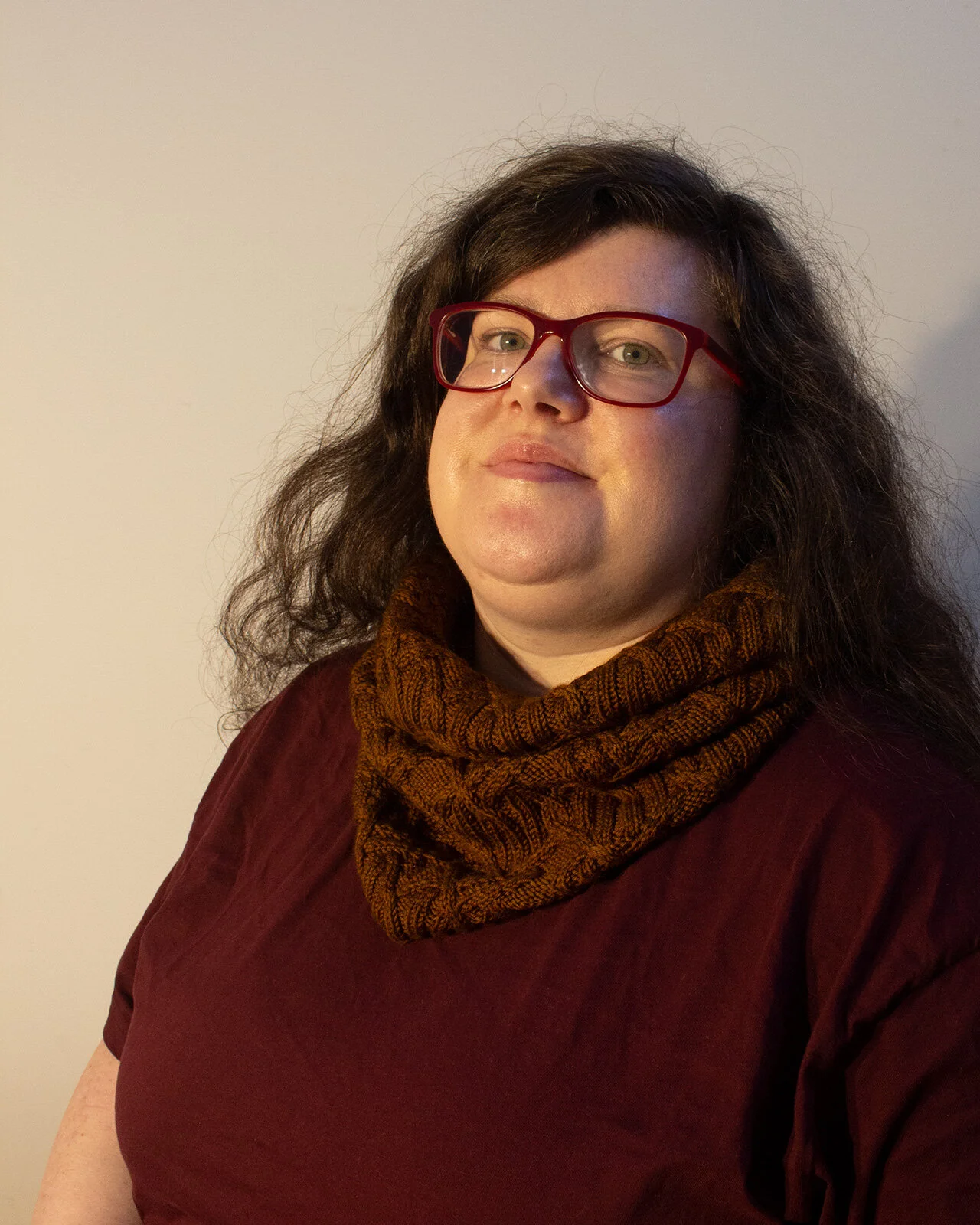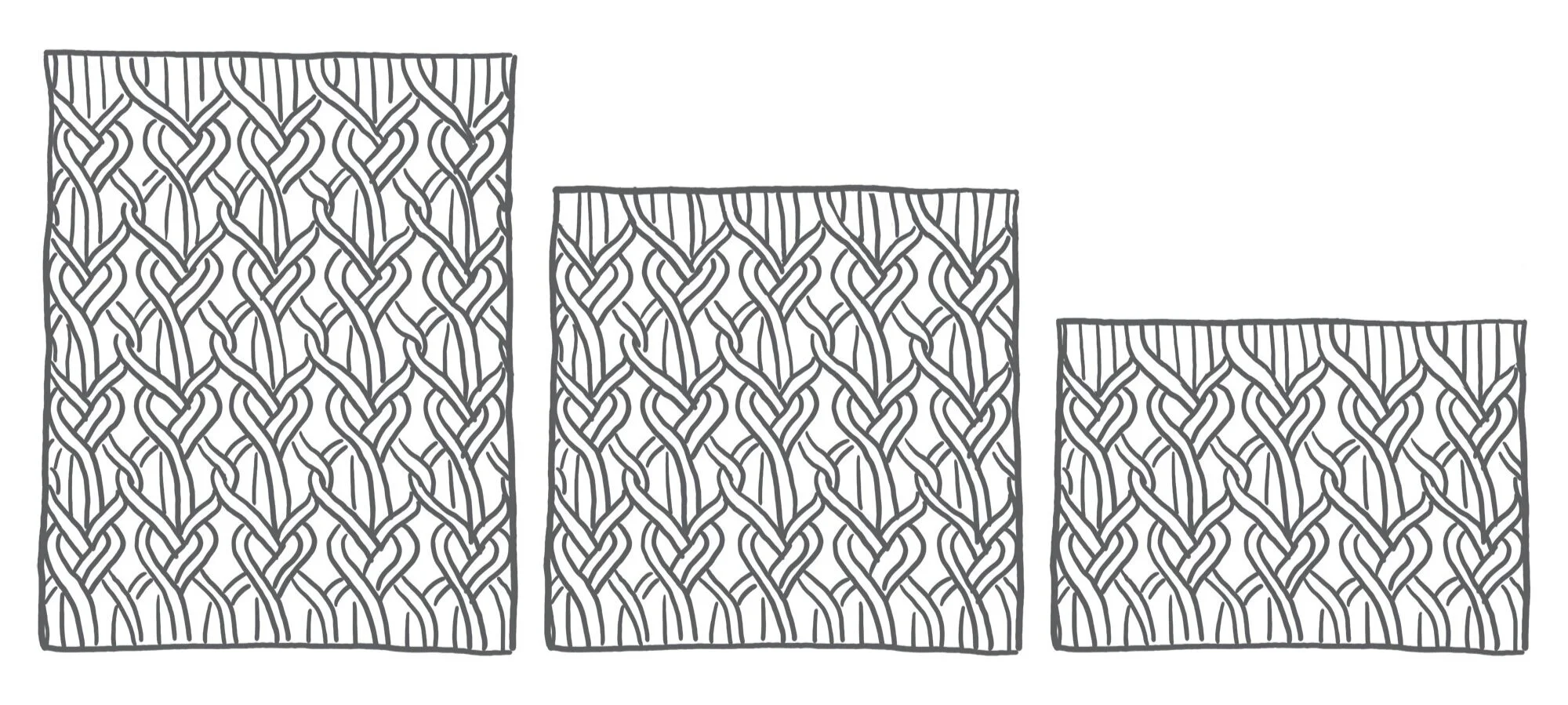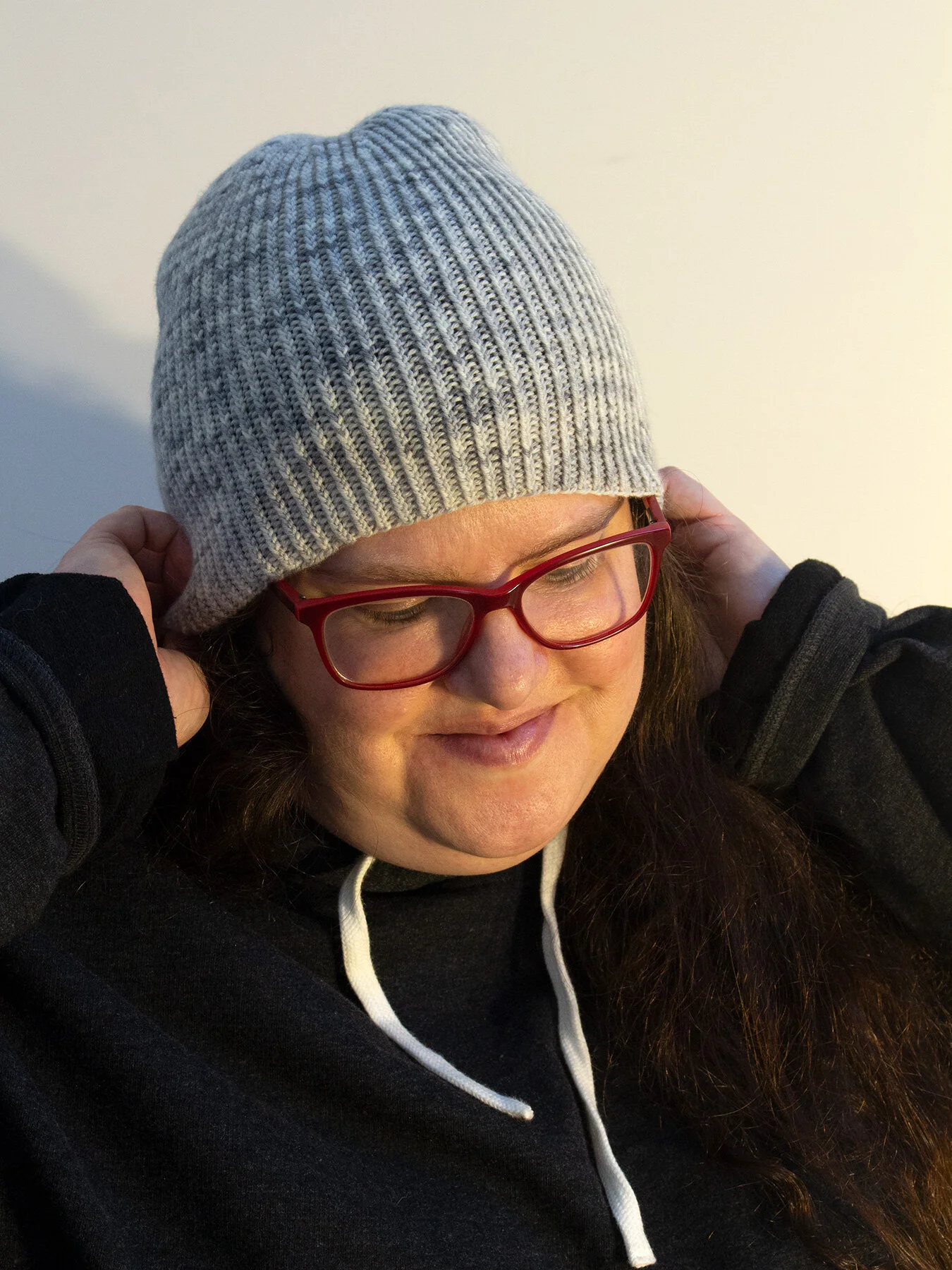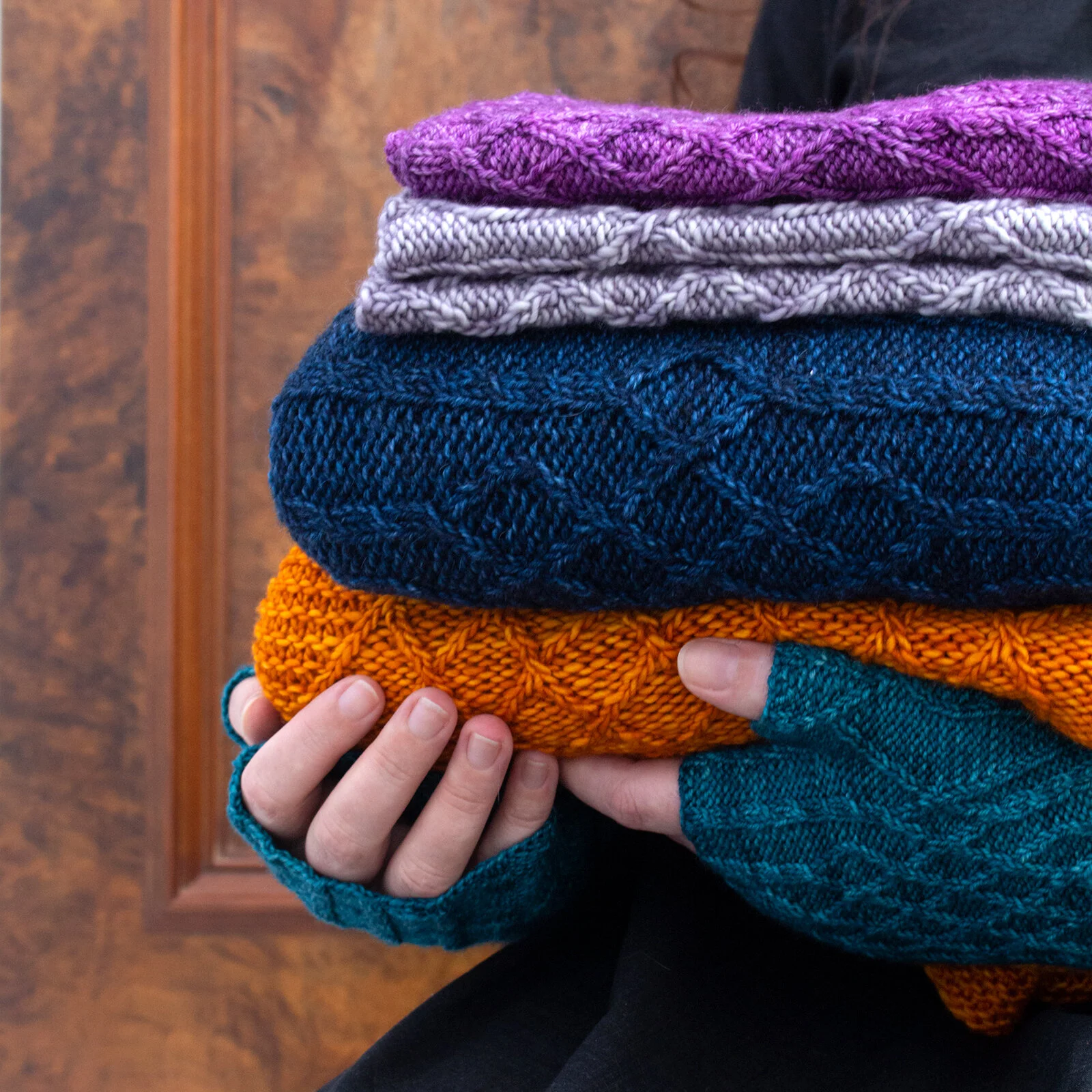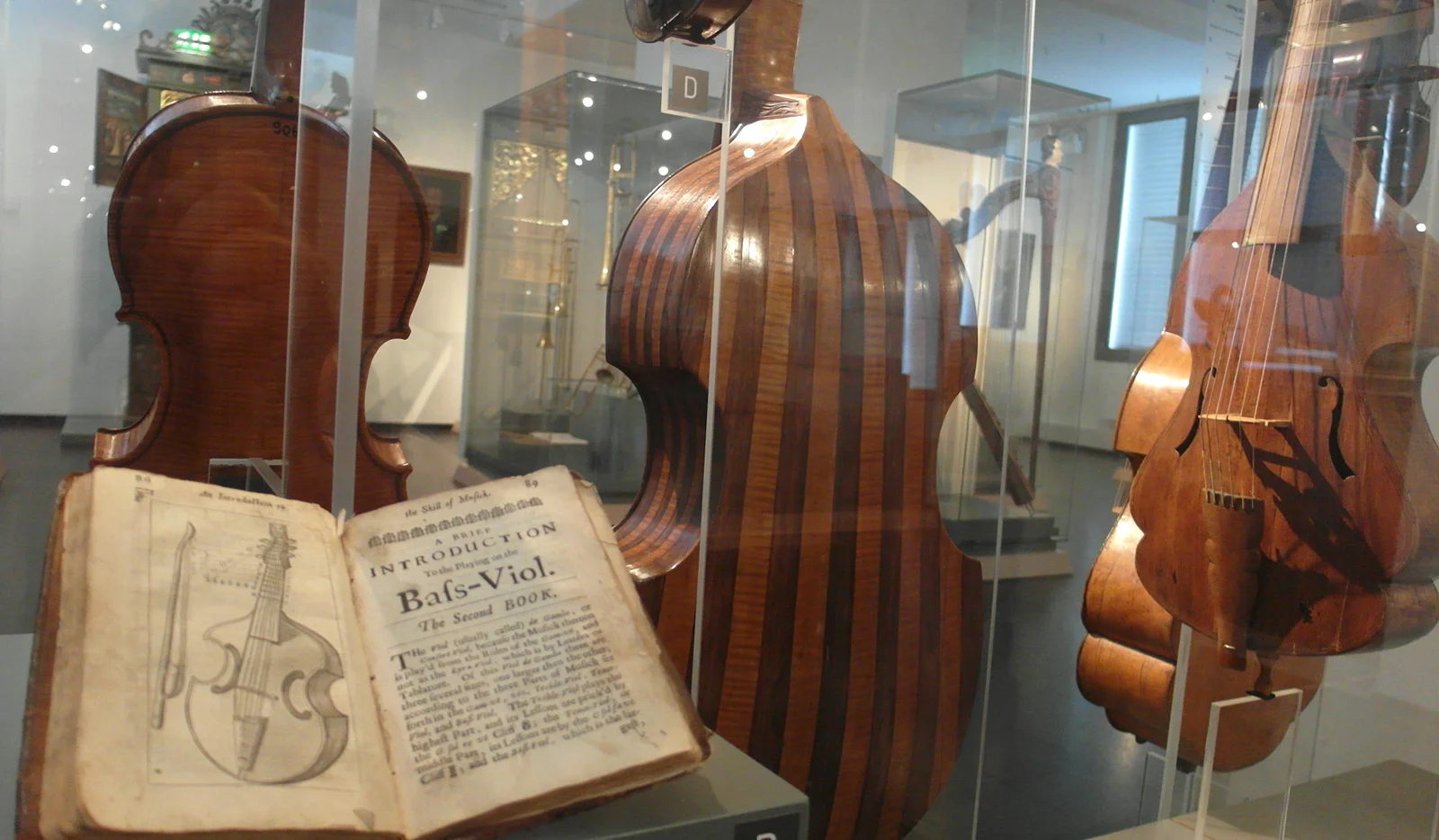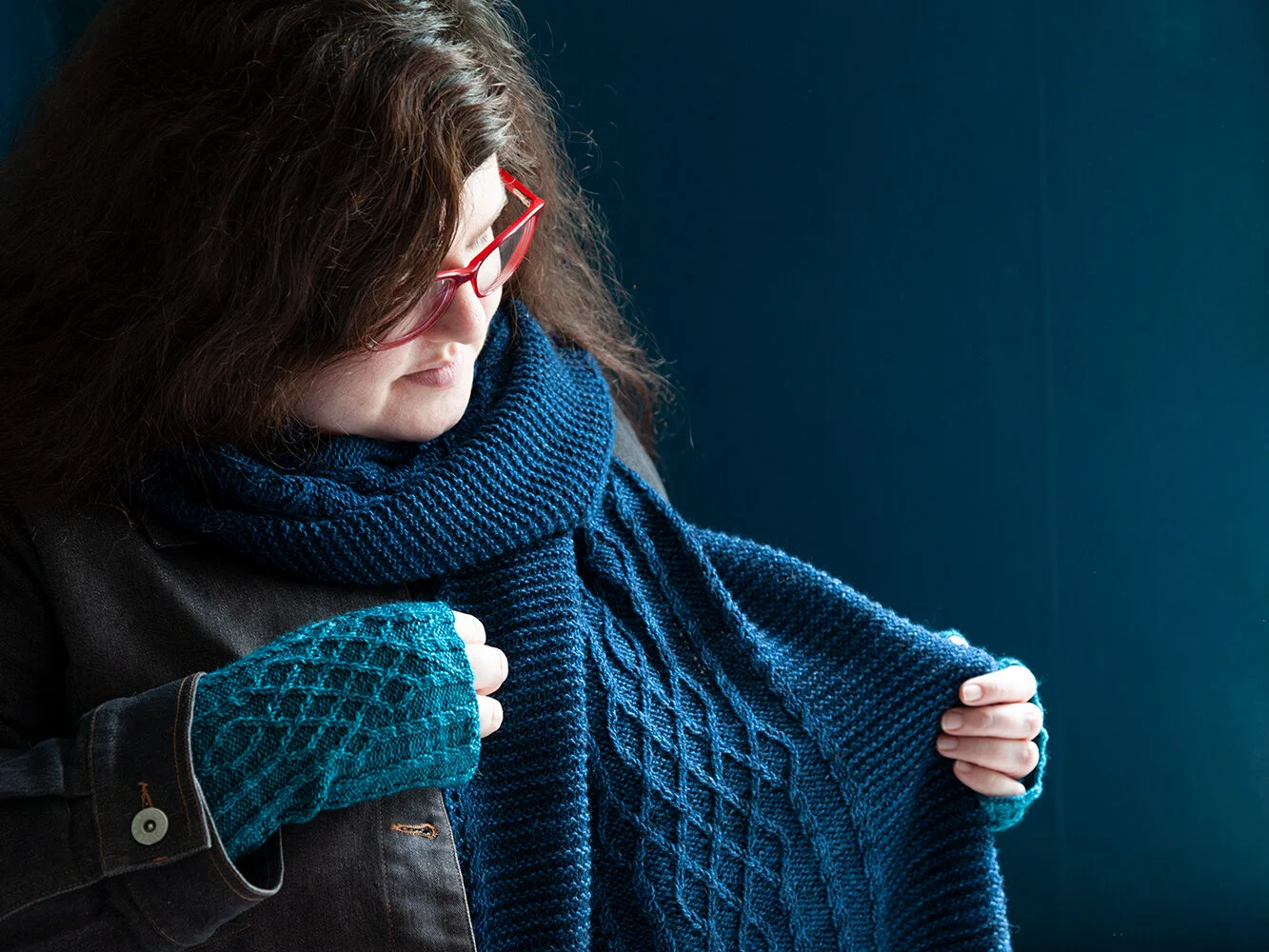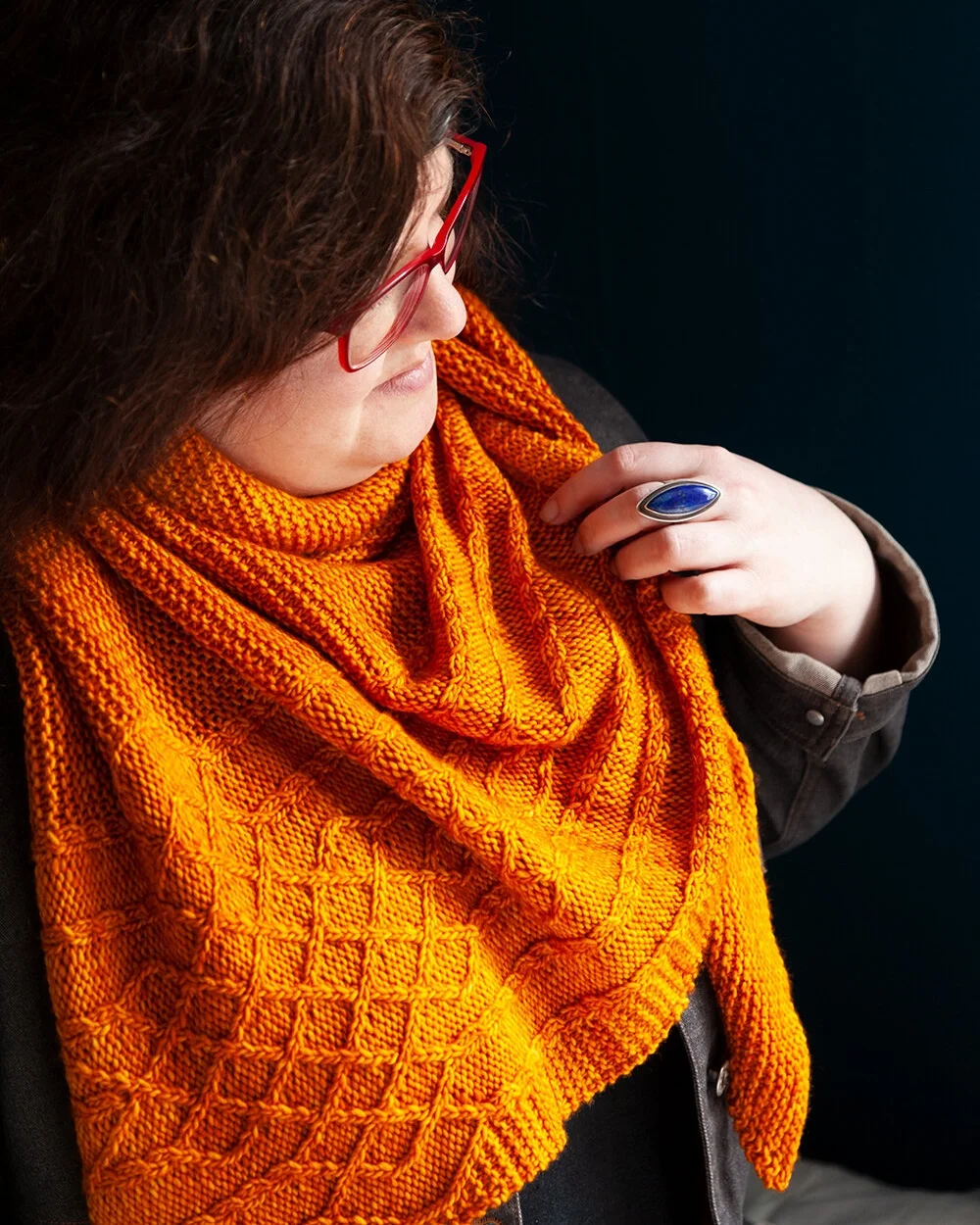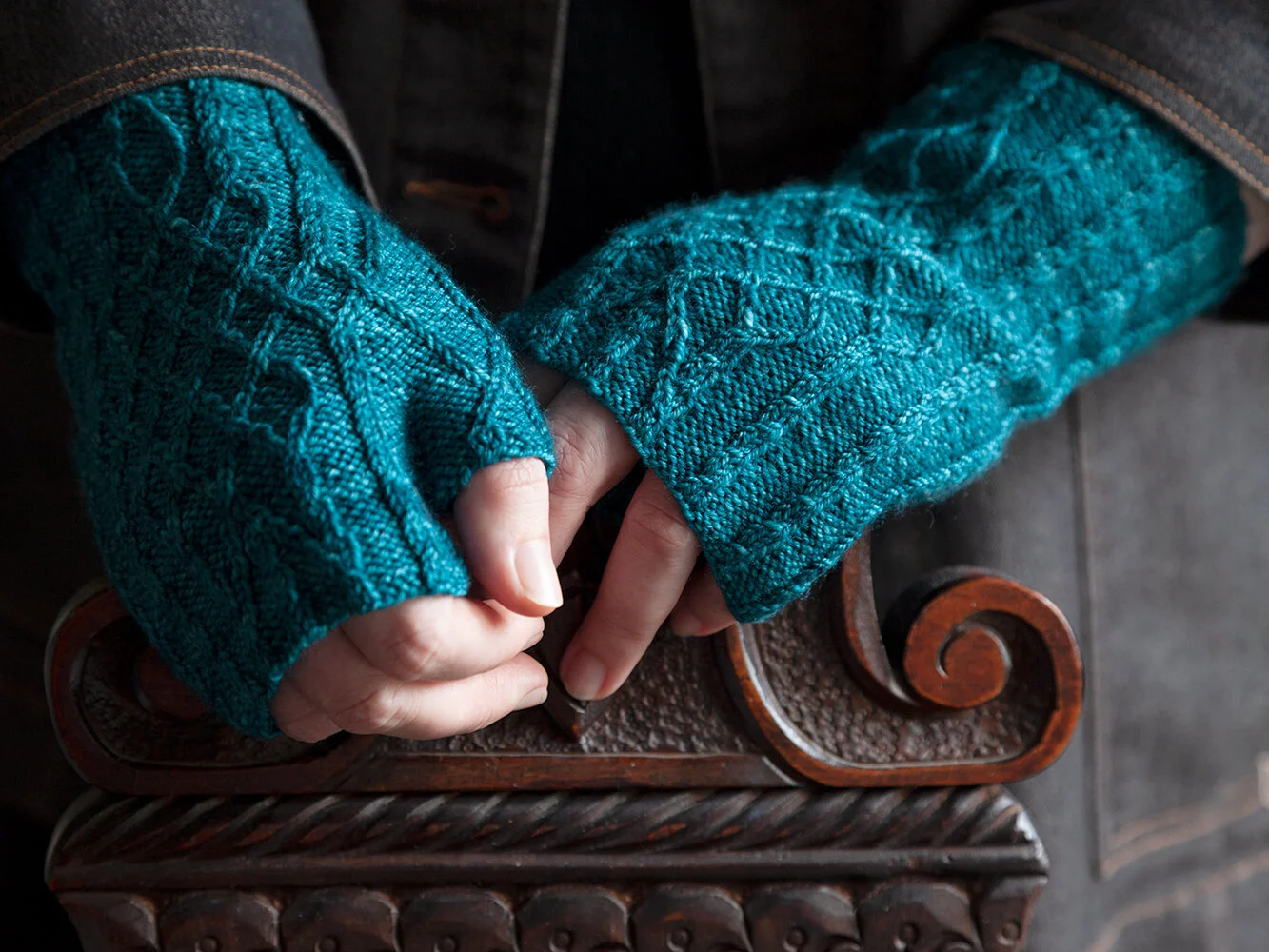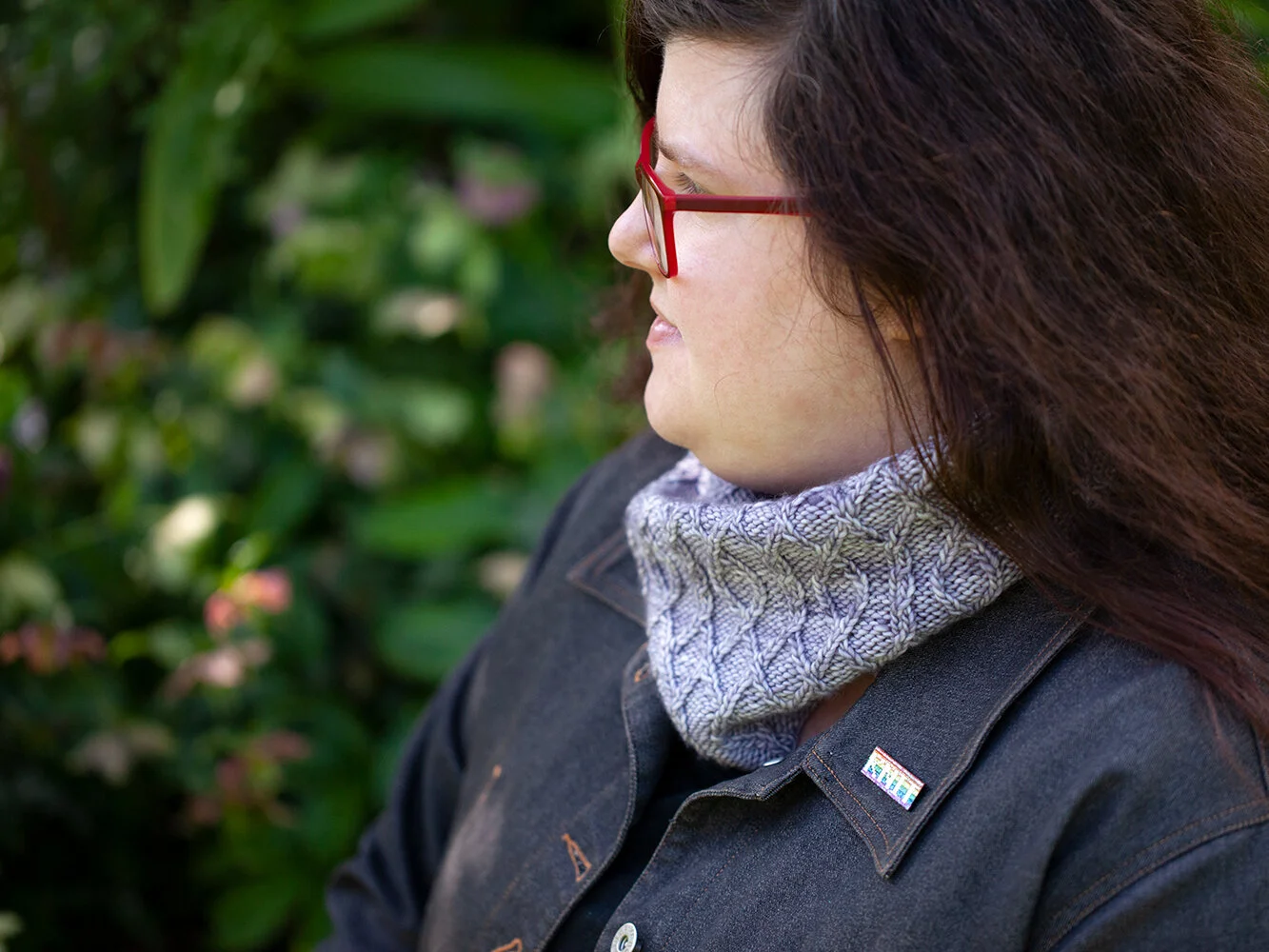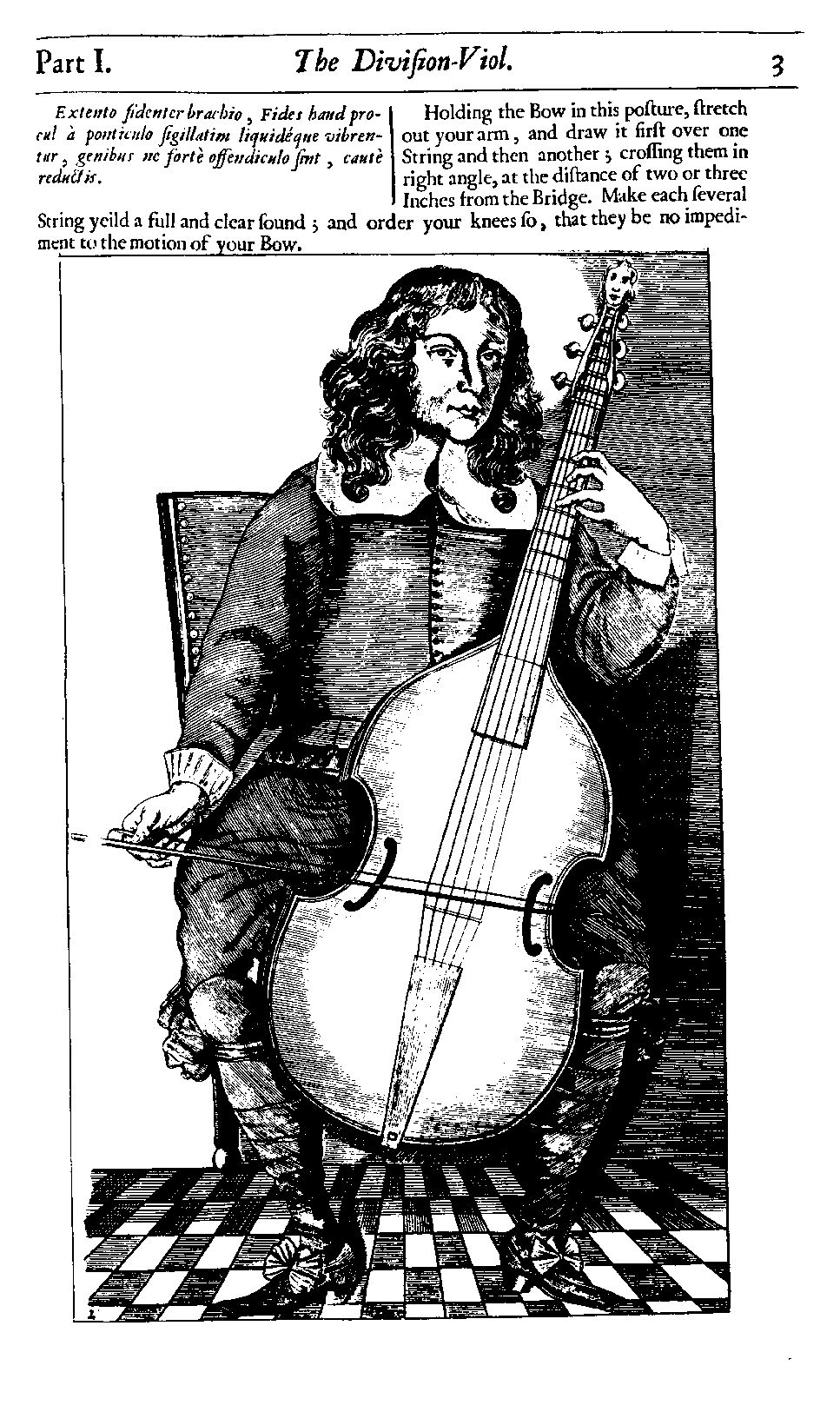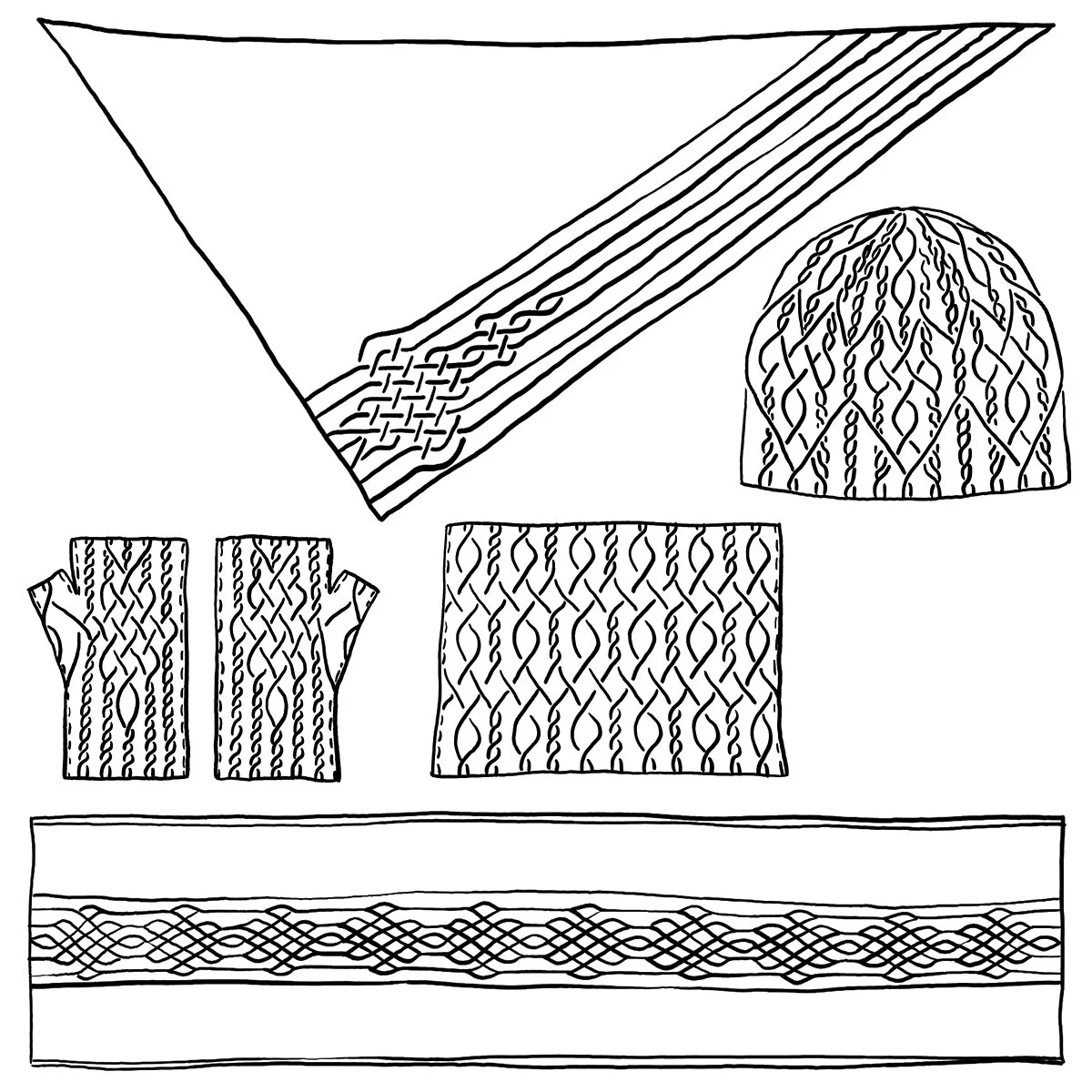I’ve been wanting to design some cat-inspired knits for a long time. This year, when my cats have been such wonderful little distractions through lockdowns and uncertainty, has turned out to be the year! The Cat’s Eye Cowl is a tribute to my beautiful kitties Sasha and Katya, who always like to keep a close eye on me in case I might be about to hand out cat-treats or a new cardboard toy. The cowl is a short loop knit in the round, with an all-over stranded colourwork pattern featuring gleaming feline eyes and strong geometric lines.
Katya, age 2
Sasha, age 2 & 1/2
And Mitzi, Mum & Dad’s feline friend
I usually begin my colourwork designs by filling in squares in an Excel spreadsheet, which allows me to quickly copy & paste and go through a lot of variations quickly. This colourwork pattern actually began life as a moon-and-stars design, and as I played with it over time I decided the moons should be cat-like eyes instead. Not much remains of the original idea in the present pattern, except for the glints of starlight in the centre of each eye and the shading towards their outer edges. As is the case with many of my knitting ideas, simplifying the design over a number of iterations made it much stronger and also much more ‘me’.
The yarn I used for my sample is John Arbon’s Yarnadelic (100% Falklands Corriedale Wool; 364yds/333m per 100g skein), one skein in Sunflowers in my Garden for the main/background colour and one skein in Indigo Dust for the contrast colour. Yarnadelic is a multi-plied yarn with a bit of a woolly halo which helps the colourwork stitches ‘stick’ together, and the colours are beautifully rich and complex.
Two height options are included in the Cat’s Eye Cowl pattern, 9”/23cm and 11.5”/29cm, and it’s easy to alter the 24”/61cm circumference by working additional repeats if you prefer a longer or double-wrapped cowl.
Skills needed to work this pattern include the Long Tail Cast On (or your favourite cast on that will work with 3x1 ribbing), working stranded colourwork in the round, and following a colourwork chart. Tips on colour dominance, tension, and swatching colourwork in the round are included in the pattern. I would also recommend going down a needle size when you work the ribbing, which I wish I had done! You can see in the photos below the bottom ribbing has flipped up. It laid flat just fine after blocking, as you can see in the non-modelled photos - up until I put it on and moved around. I think it actually looks ok, but that wasn’t supposed to happen…
This blog post from Felicia of The Craft Sessions has a few more tricks to help avoid flippage: How To Stop Your Knitted Hem From Flipping Up.
Cat’s Eye Cowl features:
a short cowl knit in the round, with an all-over stranded colourwork pattern of cat’s eyes and geometric elements
two height options are included in the pattern, and the circumference is easily adjustable to your preference
requires MC (Main Colour): 127 (169)yds/117 (155)m + CC (Contrast Colour): 185 (228)yds/170 (209)m in sport or heavy fingering-weight yarn (shown in John Arbon Yarnadelic)
choose a wool or wool-blend yarn suitable for colourwork, in colours with sufficient contrast
cowl dimensions, relaxed after blocking: 24”/61cm circumference, and 9 (11.5)”/23 (29)cm high from cast-on to bind-off. Sample shown in 11.5”/29cm height.
Find out more about my Cat’s Eye Cowl pattern, including Ravelry and Payhip purchase options.
